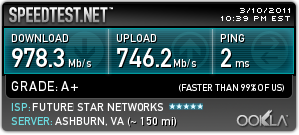Identifying your hardware devices in Device Manager.
1) Start > (right click) on Computer > Manage > Device Manager.
- Here you will find a category listing of your machine's devices. Each category will list particular hardware names pertaining to you machine's devices.
- Should you have a device which does not have a driver installed (or one which has but is not correct) you may be presented with a yellow exclamation mark. NOTE: the yellow exclamation mark may also be due to a device been disabled.
Here i am using the wireless network adapter.
2) Select the 11/a/b/g Wireless LAN Mini PCI Express Adapter, right-click, Properties
3) In the Properties box, go to Details tab, and under the property drop down menu, select Hardware Ids.
4) Note down the PCI ID as shown in the Value box. In this example it's PCI\VEN_168C&DEV1014. This is the info that you will need to located in the driver file, which in for most is the .inf file to accurately determine if you have the correct driver or not.
- At this stage you are only concerned with finding the driver which includes this PCI ID.
- You may also need to make sure that the driver is what matches your system interms of architecture eg. x86 or x64. (refer to further down on how to know this).
5) From your downloaded driver, if it comes in an .exe or .msi you will need to extract this file so you can locate the .inf file for the driver. A popular program to do this is 7-zip (free last time i downloaded it). Go through the extracted folders and search for the .inf file.
- You may have more than one .inf sitting together in one folder. The best way to pick out the correct .inf file (and hence make sure the driver is correct for your device) is the do a search of the PCI ID string, in the example PCI\VEN_168C&DEV1014.
6) Once your search returns the .inf file. Open it by right click and Edit or Open.
7) In the opened .inf file, do a search on the PCI ID string of interest.
- If the search return is position this means the driver you've downloaded is a matching driver for your device, however you will also need to make sure which architecture this driver is compatible with.
- The way to tell is to search in the opened file for
[Manufacturer]
%Intel% = Intel, NTx86.6.0, NTx86.6.0.1
In this example, it's x86 which is a 32Bit, the 6.6 or 6.0.1 refer to Vista OS
(you can find indepth details on what these means from Microsoft website)
8) When your search for the PCI ID string int he .inf file returns positive, and you find that it matches your OS specifics, you can be assured that you have the correct driver. Note: installing the driver can either be from the original .exe or .msi file or a setup.exe file found after extracting.
Note: This is a simple tutorial for troubleshooting a device driver from and .inf file perspective. There are other ways but at this level i feel it's sufficient to get you over the line.
Hope this tutorial is easy to follow. ;)
Attached Thumbnails
Attached Images










 Reply With Quote
Reply With Quote


Social Networking Bookmarks